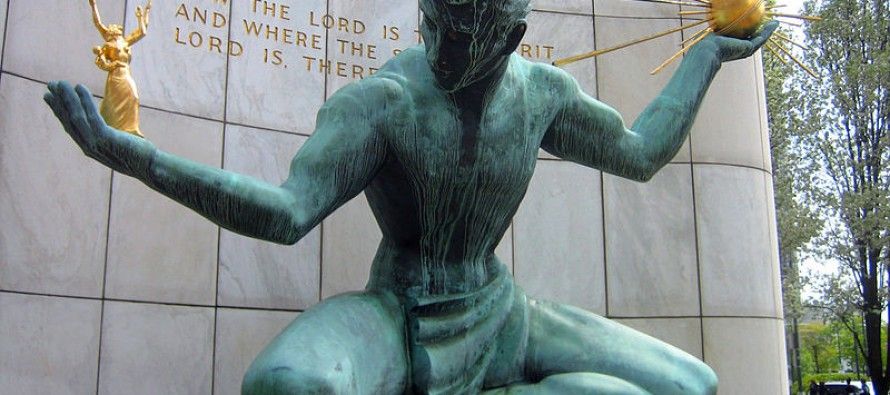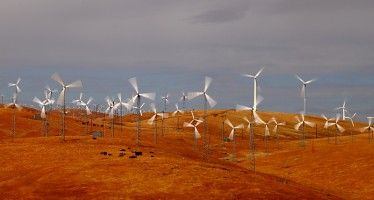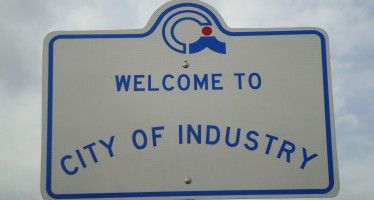Will California become Detroit on the Pacific?

Editor’s Note: CalWatchdog.com has been following Detroit’s economic situation for several years, and in light of its recent filing for Chapter 9 bankruptcy, we are re-releasing a series of articles detailing the city’s challenges. This piece was originally posted on CalWatchdog, February 18, 2013.
Environmentalists have used the allusion of the canary in the mineshaft when describing the importance of protecting the endangered Desert Sand Fly, Stephens Kangaroo Rat or the infamous Delta Smelt. By placing these insignificant creatures on the Endangered Species List, they were able to stop construction of hospitals, schools, roads and homes. And in the case of the Delta Smelt, they turned off water to countless farms in the fertile Central Valley of California.
 Long ago, the death of a canary in a mineshaft signaled the presence of poisonous gases that would imperil miners. Today, environmentalists argue that the loss of the slightest of creatures is a signal of man’s impending doom. Policies like the Endangered Species Act worked — not to save species, but to slow or stop development. Countless jobs were lost by the imposition of such noble logic. Initially created to protect the American Bald Eagle, according to the Scientific American, only 1 percent of species (20 out of 2,000) under the protection of ESA have recovered to qualify for being taken off the endangered list.
Long ago, the death of a canary in a mineshaft signaled the presence of poisonous gases that would imperil miners. Today, environmentalists argue that the loss of the slightest of creatures is a signal of man’s impending doom. Policies like the Endangered Species Act worked — not to save species, but to slow or stop development. Countless jobs were lost by the imposition of such noble logic. Initially created to protect the American Bald Eagle, according to the Scientific American, only 1 percent of species (20 out of 2,000) under the protection of ESA have recovered to qualify for being taken off the endangered list.
It is time to use this same allusion to analyze the aggressive policies of the Progressive Movement in America as they seek to create their vision of a Blue Utopia in America. One must study the impact of their policies, not on canaries, but to the plight of hard-working American families. Will the canary warn us of the poisonous economic gases of Progressive policies? Or has the canary already died? Look no further than Detroit as a city and California as a state before entering the economic future mine shaft of our nation.
Detroit: A Model City in Blue Utopia
In the 1950ss and 60s, Detroit was the fourth largest city in the United States, with arguably the highest median income, the highest percentage of home ownership and the highest standard of living in the country. The industrial capacity of Japan, Germany, France and England had been decimated by war. America, the “arsenal of democracy” protected by oceans, stood alone with an untouched industrial capacity able to supply the Baby Boom population with the new suburban homes, appliances and cars they wanted.
Detroit’s workers had plenty of good-paying jobs thanks to the dominance of the auto industry. Detroit had modern skyscrapers, mass-transit trolley cars and great public services — water, sewer, roads, public schools and libraries. It had museums, parks, a symphony orchestra and a world-class zoo. Its sports teams included Lions, Tigers, Pistons and Red Wings. Detroit worked. Its weather was not great, but no worse than Cleveland, Philadelphia, New York or Boston. This was Detroit’s Golden Era.
After 1962, backed by the powerful unions of the auto industry, Detroit tilted from a two-party political system to one-party rule. Democrats, fueled by union contributions, routed Republicans from office and had their way governing Detroit for the next 50 years. They brought $400 million in federal funds to Detroit from President Lyndon Johnson’s Great Society and “Model Cities” initiatives. Their progressive policies were unchallenged.
With one-party rule, the Progressives were able to impose their utopian ideas on the bluest of American cities without political debate. What did their vision of Blue Utopia create? In 1967, Detroit burned. During horrific race riots, 2.500 businesses burned to the ground and 43 people were killed. That same year saw 67,000 people move out of the city and another 80,000 followed in 1968.
With the election of Coleman Young in 1973 as the nation’s first black mayor, the shift to Progressive policies supported by massive federal funding was complete. Detroit’s Golden Era was gone. The canary was dead. The proof is history itself.
Detroit in 2012 is a shadow of its former self. Its population has shrunk from 1,849,568 in 1950 to 706,000. Of 12,103 babies born in Detroit in 2009, 75.4 percent were born to unmarried women (2010 Census Bureau survey). Unemployment officially stands at 29 percent. But Mayor Dave Bing said at a recent White House Jobs Summit that Detroit’s unemployment rate was “probably close to 50 percent.”
Bing, like every Detroit mayor since 1962, went to Washington to press the federal government to channel more money directly into the city. There are between 100,000 and 200,000 vacant houses in the city and the average home price has fallen below $10,000. That unimaginable number is not a typo but a symbol of reality in modern Detroit. Over 500 arson fires are set in the city of Detroit per month.
According to one report, “The Detroit Fire Commissioner, Donald Austin has suggested that it be wiser for the sake of cost and safety, to allow some vacant structures to burn when set on fire by arsonists. He has suggested the fire department handle the fire as a controlled burn, rather than extinguish the fire and leave a half burnt down shell that poses the danger of an unpredicted collapse.”
In 2010, Detroit Mayor Dave Bing proposed a radical plan to bulldoze 40 square miles of the city (25 percent), turning it back into pre-1950′s farmland. Economics writer Benjamin Clement wrote in an article, “Detroit: America’s War Torn City“:
“Visiting Detroit is the closest Americans can come to viewing what appears to be a war-torn city without leaving the U.S. This former powerhouse is a barren stretch of land, devastated by looters and full of run-down, vacant houses. Rows upon rows of dilapidated structures line the streets; empty apartment buildings and factories consume the landscape. Almost a third of Detroit has been abandoned.”
Detroit once manufactured 5 million cars per year and now produces just 2 million. Detroit has been ruled for 50 years by one party, which is funded by the once-powerful labor unions. In the 1970s, the unions arrogantly ignored low-priced Japanese imports and allowed Toyota and Nissan to take their jobs. They refused to make wage concessions when manufacturers threatened to move to Ohio, Alabama and South Carolina — and lost more jobs.
As even more automobile manufacturing was outsourced under the North American Free Trade Agreement, the unions had become too weak to block the legislation in 1994. Understandably when jobs left, people followed in search of work, just as in the dust bowl days. Detroit today is a city on life support; its factories silent, its jobs gone, its coffers empty, its schools bankrupt and its families ripped asunder.
In 1960, no one could envision the rapidity of Detroit’s decline. How could this happen in Blue Utopia?
California: Today’s Blue Utopia
Spanish-American philosopher George Santayana said, “Those who cannot remember the past are condemned to repeat it.” Californian’s political leaders ignore the canary lying on the bottom of its cage and blindly follow Detroit’s model.
Last November, California voters vanquished the last of the state Republicans, leaving no Republican holding statewide public office. Democrats, capturing supermajorities in both the state Senate and the Assembly, no longer need a single Republican vote to pass legislation, including tax increases. They are fueled by powerful labor unions that collect dues from teachers and public employees to fund campaigns that guarantee the re-election of their proxies in the Legislature, who vote higher and higher benefits to union members.
City after city faces bankruptcy and ruin from massive unfunded pension obligations that allow lifeguards in Newport Beach to retire at 50 years old with $108,000 annual pensions for life. The Stanford Institute for Economic Policy Research reported in Feb. 2012 that local governments have $200 billion in unfunded pension obligations that will consume 17 percent of municipal budgets. An earlier report in 2010 revealed the State of California has $500 billion in unfunded pension obligations.
Gov. Arnold Schwarzenegger issued a supposed hiring freeze during the worst of the 2008-2009 recession. Yet the state continued to hire more workers, adding over 13,000 employees in 2008-2009. Salaries that fuel high pension costs are also out of control. U.C. Berkeley’s “Institute for Research on Labor and Employment” produced a detailed policy paper entitled “The Truth about Public Employees in California” that revealed the following:
- The average public sector worker makes $65,000 per year, plus pension, health and vacation benefits, making their average total compensation $102,225 per year.
- The average private sector worker makes $46,500 per year, plus pension, health and vacation benefits, making their average total compensation $57,558 per year.
With policies like this, California ran $20 billion deficits year after year. Gov. Jerry Brown declared California should generate a surplus this year with the passage of Proposition 30, which raised the top state income tax on the wealthy to 13.3 percent — higher than top tax rate in Russia. And Californians also have to pay the 39.6 percent top federal income tax rate.
But Brown and his fellow Progressives have plans to spend this tax windfall on new state spending like a Bullet Train between Fresno and Bakersfield that will cost $68 billion.
California’s schools once were the envy of the world. This is no longer true. Journalist Peter Schrag describes it as the “Mississippification” of California.
California voters and politicians have drained education’s coffers to pay for prolific spending elsewhere in the state budget. In 2011, public colleges and universities received 13 percent less in state money than they had in 1980 (when adjusted for inflation). Its Community College system lost $809 million — or 12 percent of their state funding — since 2008. The state’s K-12 education system now ranks 49th in state spending per pupil. California could face a shortfall of a million skilled workers by 2025.
According to Columnist David Spady, California local school districts have become some of the worst abusers of passing on debt to future generations. In Poway, voters approved borrowing $105 million for its schools. Payments of $50 million per year begin in 20 years, with total repayment of $981 million. Voters shackled future residents with a terrible burden for spending today.
Poway is not alone. In response to reduced funding, since 2007 school districts in California borrowed $7 billion for new construction projects using Capital Appreciation Bonds that feature no payments for 20 years.
The Central Valley, once the food basket of America, found its water diverted from farms to the ocean to “protect” the Delta Smelt. To protect this tiny fish, otherwise known as bait, water was diverted from farms, eliminating 37,000 jobs and leaving 300,000 acres fallow. Unemployment in the Central Valley is now 40 percent in places with farm workers relying on food stamps to feed their families.
With unemployment in California officially near 10 percent, but practically around 15 percent, people continue to migrate out of the Golden State in search of jobs and opportunities elsewhere. It is understandable and the consequences are obvious.
This migration, which began two decades ago, has now picked up speed with new taxes on the wealthy and the successful fund the Progressive vision of Blue Utopia. Golfer Phil Mickelson was ridiculed for stating the obvious — that he might have to leave California. With the new California taxes imposed by Prop. 30, Mickelson’s “fair share” is around $8 million per year — $22,000 per day or $1,000 per hour — for the privilege of living in their Blue Utopia. Can anyone blame Mickelson when he moves to Florida, where there is no state income tax?
Blue Utopia America?
We have a Progressive President who, with his re-election, made it clear he plans to pursue a Progressive agenda. He wants clean water, clean air and green energy. He proclaims Republicans want dirty air and dirty water and oppose him on green energy. He would like nothing less than one party rule so he can impose his vision of Blue Utopia on America.
If Americans paid attention to the past, they might not be condemned to repeat it. If they were paying attention now, they would notice the canary in their mineshaft gasping for breath. If they studied the policies that have already failed miserably, making Detroit a third world city, they could change course and save the Golden State. If our leaders in Washington did the same, they would know better than to push us down this path. The problem is we do not teach history anymore. And if Americans cannot remember their own past, they too will be condemned to repeat it.
Robert J Cristiano, Ph.D., is the Real Estate Professional in Residence at Chapman University in Orange, Calif.; a Senior Fellow at the Pacific Research Institute in San Francisco, Calif.; and president of the international investment firm, L88 Companies LLC in Washington, D.C., Newport Beach, Denver and Prague. He has been a successful real estate developer for more than 30 years.
Related Articles
Unions, environmentalists clash over wind farm
Usually reliable allies for three liberal causes – renewable energy, environmental protection and labor unions – clashed recently over whether
Video: Is cap and trade good policy for CA?
Writer Stephen Moore, formerly of the Wall Street Journal, discusses how California’s energy policy is driving businesses out of the
State Controller Betty Yee to audit City of Industry
First, it was widespread corruption at the city of Bell. Next, came an even bigger embezzlement scandal in Pasadena. Now,




